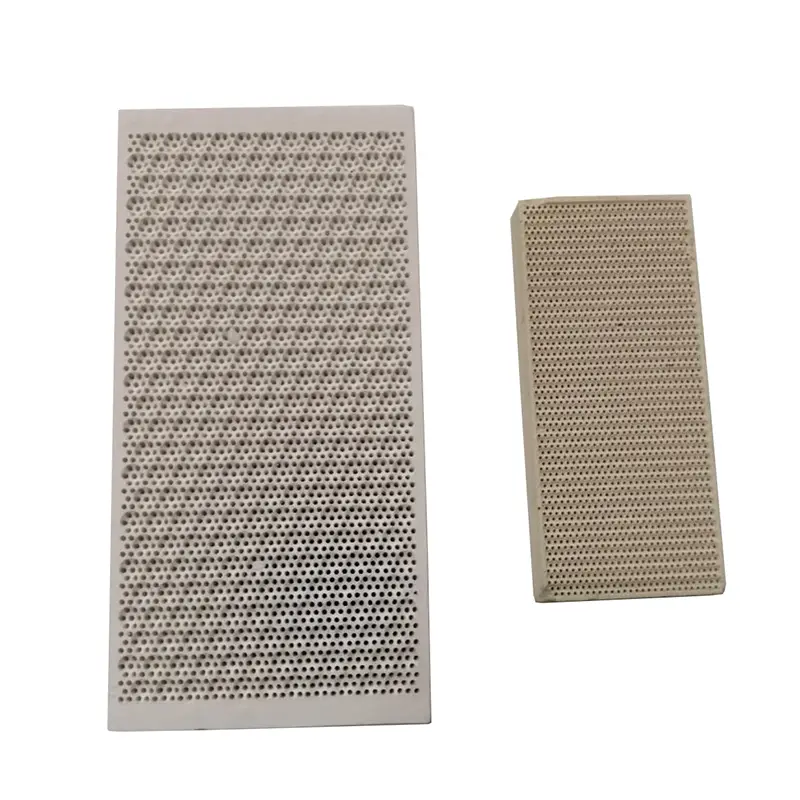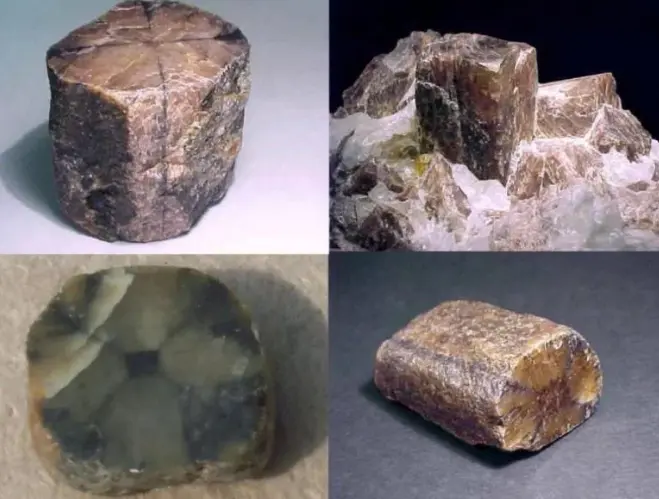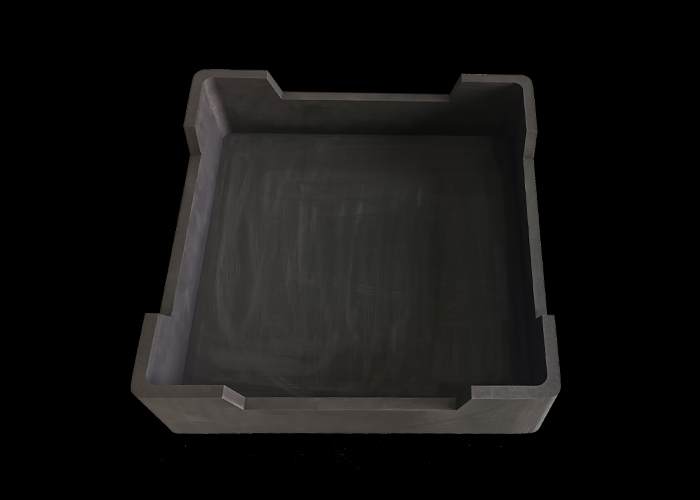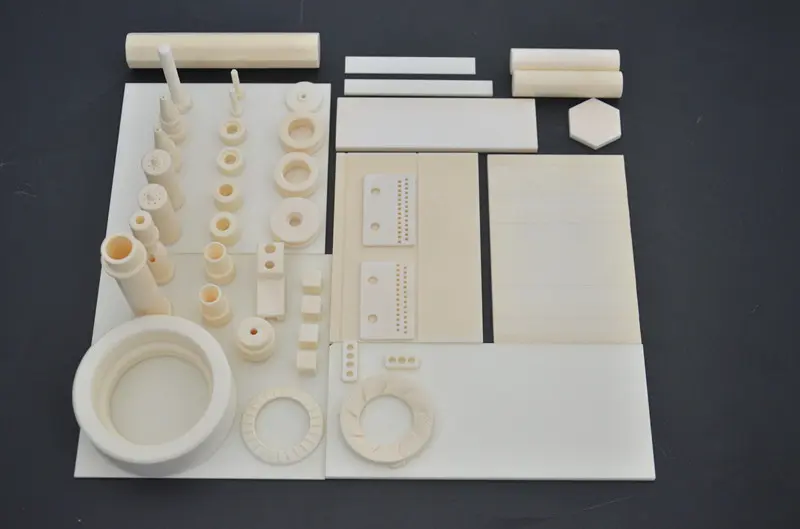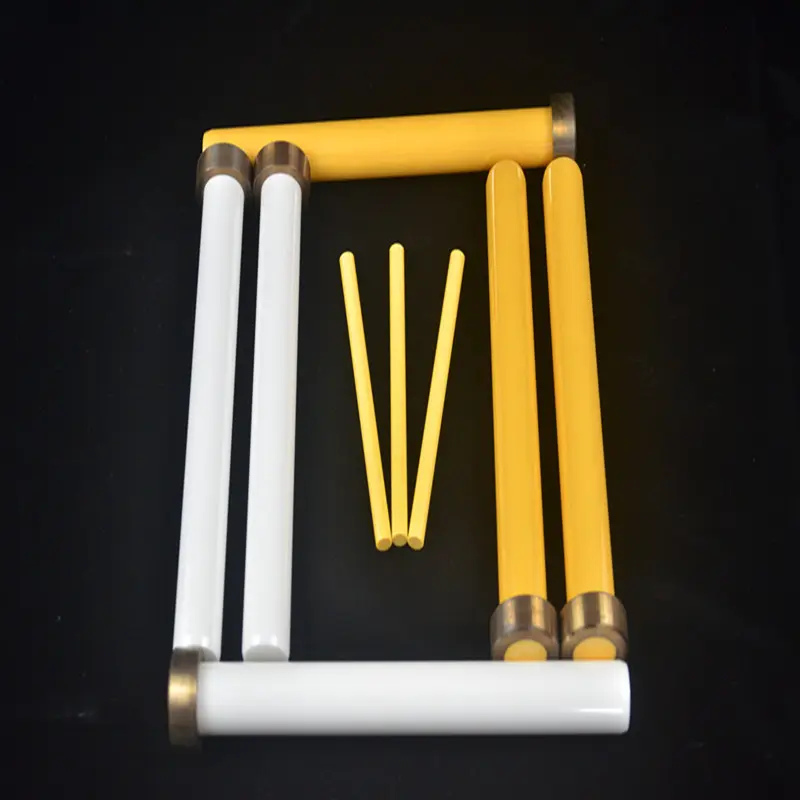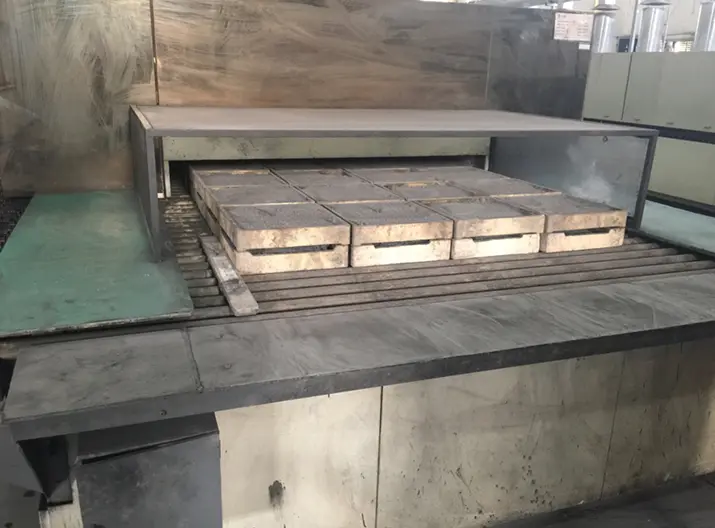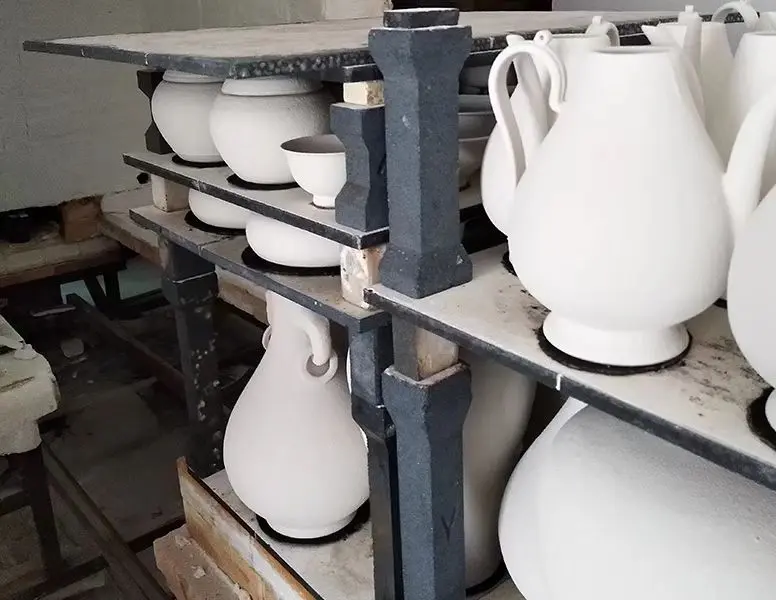Silicon Carbide Kiln Furniture: Empowering Efficiency and Quality in Pottery Firing
Overcoming Pottery-Specific Firing Challenges: Pottery firing presents unique demands. Lower firing temperatures (typically 900°C - 1250°C for earthenware and stoneware) compared to porcelain might seem less demanding, but challenges like warping, cracking during rapid cooling cycles (common in salt/soda or wood firing), inconsistent heat distribution affecting glaze maturity, and the need for economical production remain significant. Traditional Kiln Furniture struggles with these:
-
Thermal Inefficiency: Low thermal conductivity slows heating and cooling, extending cycle times and wasting energy.
-
Warping & Sagging: Under repeated loads, especially during prolonged firings or in heavily loaded kilns, traditional shelves can warp, transferring distortion to the pottery resting on them.
-
Thermal Shock Vulnerability: Susceptibility to cracking during rapid cooling cycles (essential for certain glaze effects or salt firing) leads to frequent replacements and kiln contamination.
-
High Thermal Mass: Thick sections needed for strength absorb significant energy, increasing costs.
-
Potential Contamination: Dusting or reactions with kiln atmosphere/salts can mar pottery surfaces.
The SiC Solution for Pottery: Silicon Carbide Kiln Furniture directly addresses these pottery-specific needs:
-
Superior Strength & Stability at Pottery Temperatures: Even within pottery's typical range, SiC offers exceptional mechanical strength and creep resistance. SiC shelves resist warping and sagging under load over thousands of firings, providing a perfectly stable, flat surface crucial for preventing warping in plates, platters, and tiles. Posts and beams maintain structural integrity in tall stacks.
-
Rapid & Uniform Heating/Cooling: SiC's high thermal conductivity (3-5x traditional materials) ensures heat penetrates the kiln load quickly and evenly. This promotes consistent vitrification (for stoneware) and glaze maturation across all pieces, reducing defects like underfired glazes or bloating. Crucially, it enables much faster cooling cycles without risking thermal shock damage to the furniture itself – essential for achieving crystalline glazes, specific matte finishes, or salt/soda firing techniques.
-
Exceptional Thermal Shock Resistance: This is arguably SiC's most vital property for many potters. Its ability to withstand rapid temperature changes (e.g., opening a kiln for reduction cooling, quenching for crystalline effects, or the thermal stress of salt/soda vapor injection) without cracking is unparalleled. This reliability prevents kiln damage and costly production halts.
-
Reduced Energy Consumption: The combination of high thermal conductivity and the ability to use thinner, lighter-weight SiC components due to its inherent strength drastically lowers the thermal mass. Less energy is wasted heating and cooling the furniture itself, leading to significant energy savings (often 20-35%).
-
Longevity & Cost Efficiency: SiC's durability under thermal cycling and mechanical load means it lasts vastly longer than traditional furniture – often enduring thousands of firings even in demanding environments like salt kilns. This dramatically reduces replacement frequency, downtime, and long-term costs.
-
Chemical Inertness & Cleanliness: SiC is highly resistant to reactions with kiln atmospheres (oxidizing, reducing, neutral), fluxes, salt/soda vapors, and glaze volatiles. This minimizes the risk of kiln furniture dust contaminating pottery surfaces (preventing spots, blisters, or glaze defects) and ensures the purity of colors and textures, especially important for unglazed surfaces or delicate glazes. It also withstands the corrosive effects of salt/soda firing far better than most alternatives.
-
Design Versatility: SiC can be formed into various shapes (shelves, setters for specific forms, specialized saggar designs) allowing efficient kiln packing and optimal support for diverse pottery items, maximizing kiln capacity.
Application in Diverse Pottery Practices:
-
Studio Potters: Value the thermal shock resistance for unique cooling cycles, stability for large platters, cleanliness for high-quality surfaces, and energy savings for frequent firings.
-
Stoneware/Earthenware Production: Benefit from faster cycle times, higher yields due to reduced warping and defects, consistent quality, and lower energy costs per piece.
-
Salt/Soda Firing: SiC is virtually essential for shelves and posts due to its exceptional resistance to corrosive vapors and thermal shock during the salting process.
-
Tile Production: Flatness and stability of SiC setters are critical for preventing warpage during firing.
Tangible Benefits for Potters:
-
Higher Quality & Consistency: Reduced warping, fewer glaze defects (pinholes, crawling, discoloration), cleaner surfaces, consistent results batch-to-batch.
-
Increased Productivity: Faster firing cycles and higher kiln packing density boost output.
-
Significant Energy Savings: Lower thermal mass and faster cycles drastically reduce fuel/electricity costs.
-
Reduced Operating Costs: Minimal furniture replacement costs and less downtime.
-
Enhanced Creative Flexibility: Enables reliable use of demanding firing techniques (rapid cooling, salt/soda).
-
Improved Kiln Safety & Longevity: Reduced risk of catastrophic furniture failure damaging Kiln Bricks or elements.
Conclusion: Silicon carbide kiln furniture is a cornerstone technology for modern and traditional pottery making. Its unmatched combination of thermal conductivity, thermal shock resistance, mechanical strength, chemical inertness, and longevity directly solves the core challenges of pottery firing. By enabling faster cycles, reducing energy consumption, minimizing defects, and supporting demanding techniques, SiC empowers potters – from individual artists to industrial manufacturers – to achieve higher quality, greater efficiency, and enhanced creative possibilities, ultimately making the firing process more reliable and economical. It is an investment that pays dividends in both artistic excellence and operational performance.


